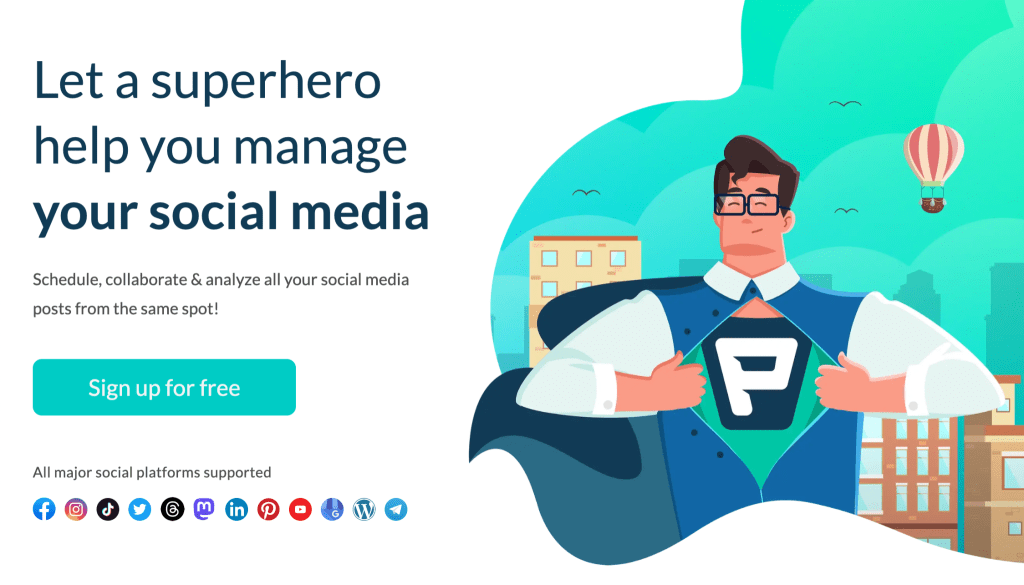
Today we answer a question, how does generative art work? Generative art is bridging the gap between technology and creativity. Machines being creative—leveraging randomness and automation to produce unique art.
But, since its origins, people have argued, is it the artists doing the art? Or, is it the machines?
The answer is still up for debate but one thing’s for certain—the potential of generative art opens the doors for unlimited creative possibilities in the future for many industries like social media.
To help us get a glimpse of what’s to come with generative art, we need to understand what exactly it is and how it all started.
What Is Generative Art?
Generative art is the product of autonomous systems be it machines or programs. It works on predefined rules from an artist. However, the rendering isn’t under the artists’ control.
Outputs from generative art can be digital renderings, sounds, sculptures, and much more. Here is an example from Harold Cohen who used the “AARON” computer to generate this drawing:

Source: Dam Projects
Here is another example of generative art from Kate Compton titled “Flowers”. It’s an interactive form of generative art that lets users choose from three prompts: replant, evolve, and evolve all.

Source: Galaxy Kate
She used a “genetic algorithm” to guide the program “towards more constraint-fulfilling and desirable-property-producing content”.
Kate did this project eight years ago. But, we can even go further back—way further, to help us understand the origins of generative art.
Where Did Generative Art Come From?
Generative art was built on inspirations from Dadaism all the way to Surrealism. These types of art celebrated chaos and unpredictability.
During the 1950s artists already experimented with mechanical systems to produce art. In the 1960s, scientists and engineers with access to more powerful machines continued the work.
They became pioneers in digital art, making massive progress in the following years. During the 1970s, their work got out of the confines of their lab walls and into the art world.
The people who made incredible strides in digital art during this era were:
Frieder Nake
Analog machines and computer programs built on patterns and numbers were the first to output generative art. And, who better to see the potential in those than mathematicians and computer scientists themselves? Frieder Nake was one of those people.
He’s both a computer scientist and mathematician recognized for his work on generative computer art. Nake held three exhibitions in the 1960s featuring the potential of this new medium.

Source: Collections/Hommage à Paul Klee, 13/9/65 Nr.2
Harold Cohen
Cohen is known as the engineer behind AARON. This was one of the first computer programs that boasted autonomous output.
His work helped introduced the concept of artificial intelligence into modern art. Cohen was held in great renown, featuring in exhibitions including the Tate Gallery in London.
AARON and Cohen’s work quickly became the centerpiece of studies for both artists and scientists. It was one of the first partnerships between humans and machines.
His system used AARON to generate the images and small drawing robots he called “turtles” to draw the images.

Source: Computer History
Herbert Franke
Nature is full of patterns, beautiful, and awe-inspiring. They come in the form of fractals—shapes repeating themselves over and over.
Herbert Franke utilized this same concept and used computer programs to translate mathematics and patterns, but this time, into abstract algorithmic art.
His early work built the foundations of generative photography. Here is an example of his work.

Source: Digital Art Museum/Herbert Franke
How Does Generative Art Work?

Photo Rendered From DALL-E
Generative art in our current era is based on sophisticated machine learning (ML) programs and artificial intelligence (AI). The AI can mimic human actions, in this case, creating art. And, ML is used to train the AI based on datasets to make better output.
Let’s take a look at RunwayML, a machine-learning tool artists can use without needing any programming experience. It can be used for a wide variety of applications such as converting text to images, replacing parts of an image, colorizing, background removal, and more.
Such tools can be used in industries such as social media marketing to streamline content production at scale. You can also use AI-powered tools with bulk scheduling features to automate posting across all your channels.
Here’s an example output we asked Runway to render for a Shiba Inu drinking coffee in the rain:

Why Has Generative Art Growing In Popularity?
In the last few years, NFTs (Non-Fungible Tokens) grew in popularity as a way to monetize unique digital art. During the early days of digital art, people were already selling digital art. However, there still wasn’t an agreed-upon system for the market.
Now we can see curated digital art in platforms such as FxHas, Artblocks, Postmaster Gallery, and the Kate Vass Gallery.
For the general public, digital generative art has become more accessible thanks to tools like RunwayML and Midjourney. It’s free, intuitive, and able to generate art within mere seconds.
Publer and Generative AI
Marketers know how long it can take to generate content for campaigns. But with tools like Publer that leverage the power of Generative AI, you can produce content at scale.
All it takes is a simple prompt and you’d have unique AI-rendered art that can fit all types of content. You can further optimize your campaigns with Publer’s intuitive dashboard.
It allows you to create content marketing campaigns for all your social media channels from a single composer tool. And, it can generate copy for marketing headlines, Tweets, and more.
Key Takeaways
Generative art has evolved from creating random patterns based on pre-defined algorithms to creating photo-realistic images trained on dynamic datasets. With its help, you’re able to:
- Streamline content creation.
- Create unique imagery.
- Create digital art without the need for coding experience.
- Design products.
- And produce faster and smarter technologies.
If you want to leverage the power of generative art for your social media marketing, look no further than Publer! Sign-up for free today and experience how AI-powered generative art can take your brand to new levels.











